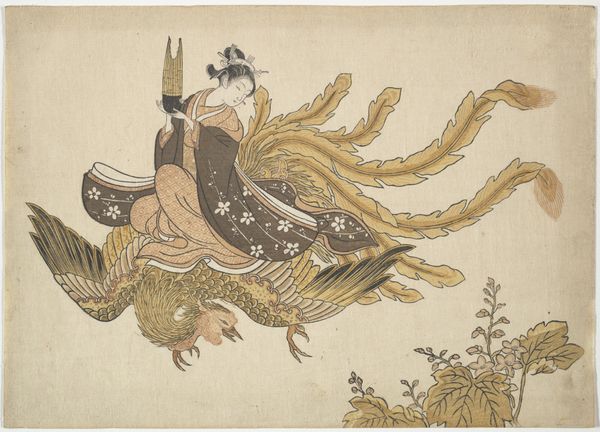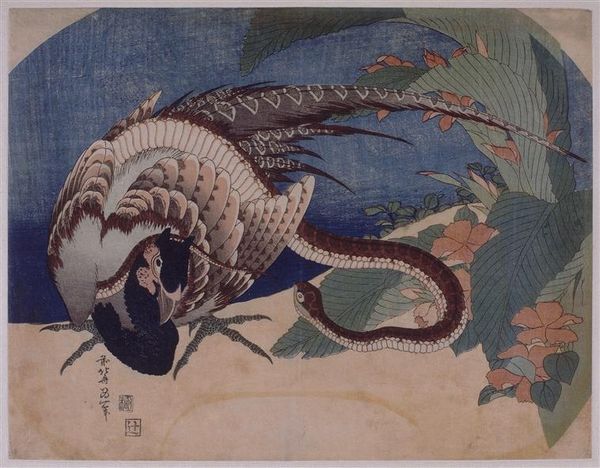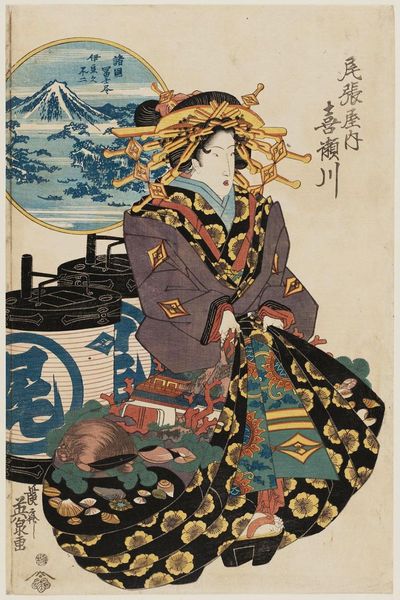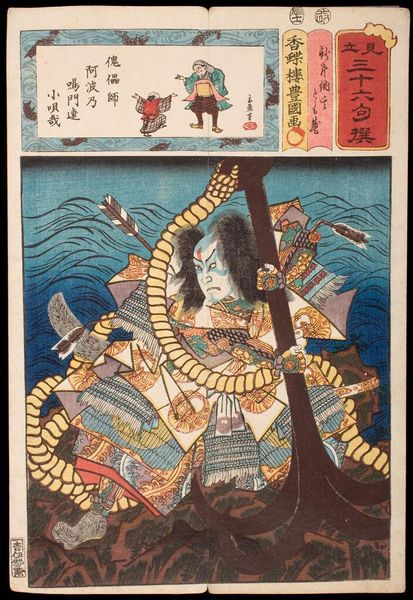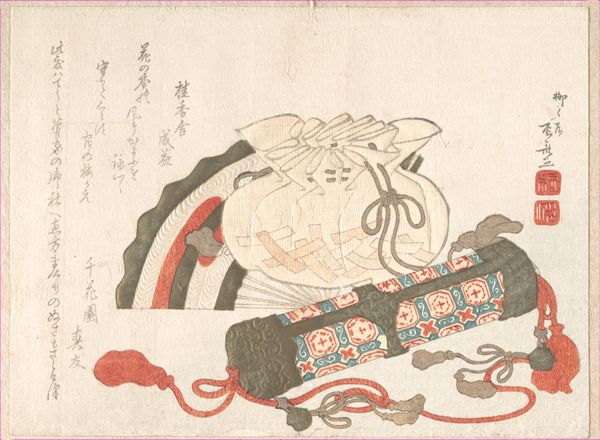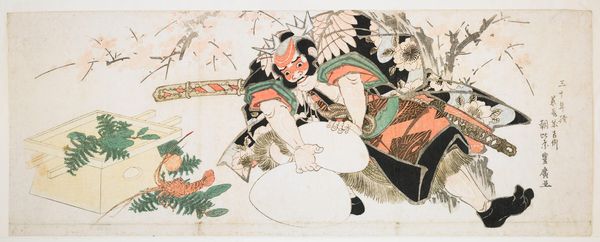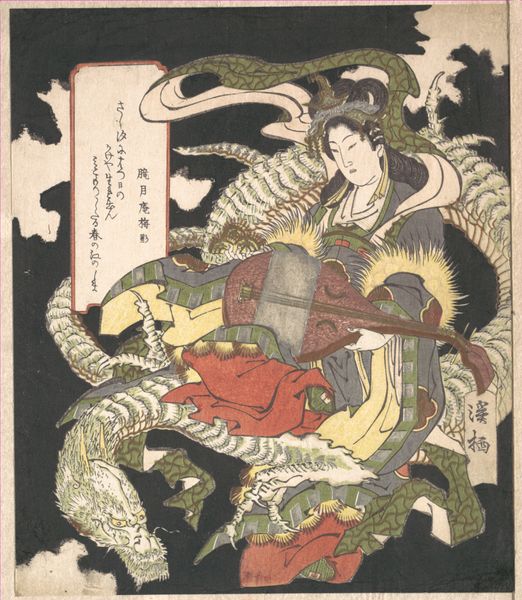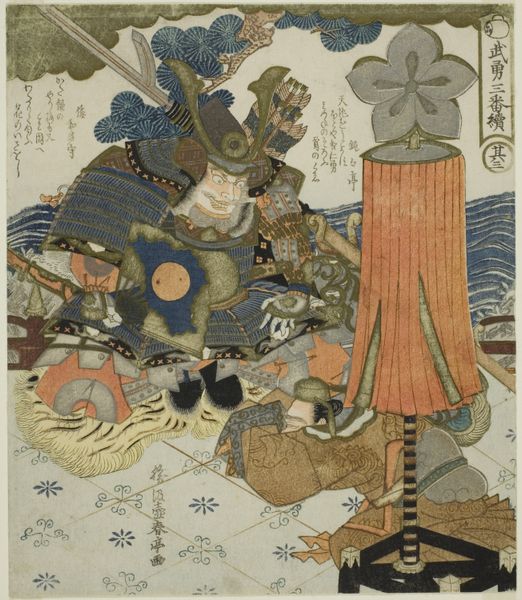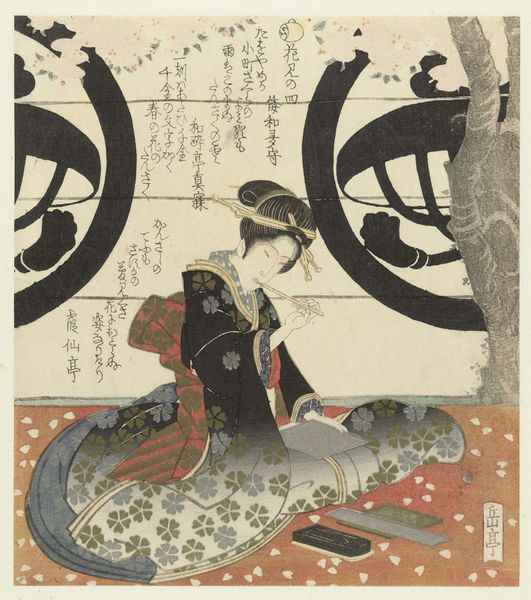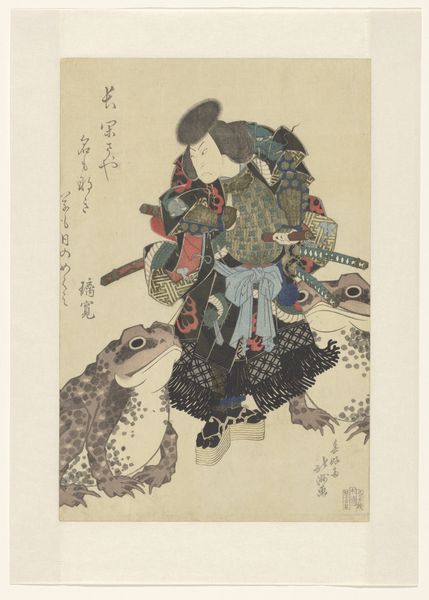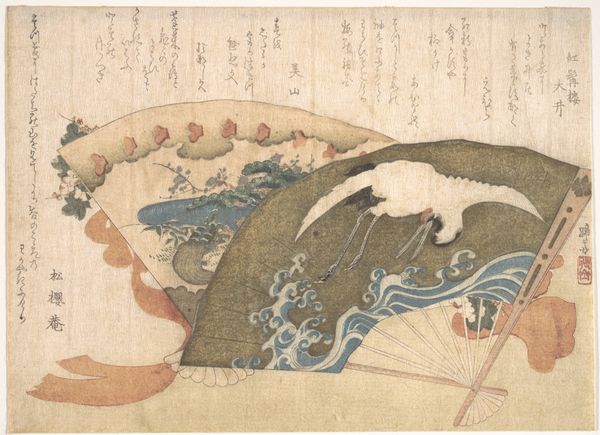
print, woodblock-print
#
narrative-art
# print
#
asian-art
#
landscape
#
ukiyo-e
#
figuration
#
woodblock-print
#
line
#
watercolour illustration
#
history-painting
#
watercolor
Copyright: Public domain
Curator: This vibrant woodblock print by Toyota Hokkei, created around 1835, depicts Oniwakamaru and the Giant Carp. It’s a classic example of ukiyo-e, isn't it? Editor: Absolutely. The first thing that strikes me is the sheer physicality of the carp itself. It looks less like a creature of the water and more like an earth-bound material thing. I find the patterning quite compelling. Curator: It really pulls you in. We can unpack it in the context of gender and power. Oniwakamaru, later known as the warrior monk Benkei, is a figure who has often been reclaimed across centuries to address themes of masculinity, social upheaval, and even the fluidity of identity. His story has resonated in different ways through time. Editor: And how fascinating that Hokkei chose to represent this pivotal moment – this triumph over a huge animal of labor – as a woodblock print. Considering the labour invested in producing each print, this imagery highlights both power and production so deftly. The material tells its own story. Curator: Precisely. In Japanese art, carps frequently embody perseverance and ambition because of their known ability to swim upstream. So Hokkei uses Oniwakamaru’s victory to tell stories of how an individual could dominate against the odds. We should remember, too, that the tale would have likely been known to a broad swathe of society, but in this medium would only have been accessible to those who could afford such prints. Editor: It begs the question, who was consuming images of the oppressed successfully challenging power? It’s like this image has labor and class consciousness built into its very material, no? The careful carving of the block, the ink, the paper: these are all traces of someone's hand and time. We are looking at the output of labour. Curator: The attention to the medium enriches our engagement with it. When we read across cultural, political, and socio-economic concerns we can better understand why an image like this continues to hold our gaze so powerfully today. Editor: Indeed. Looking closely at artmaking allows one to rethink power relations within a society itself.
Comments
No comments
Be the first to comment and join the conversation on the ultimate creative platform.

